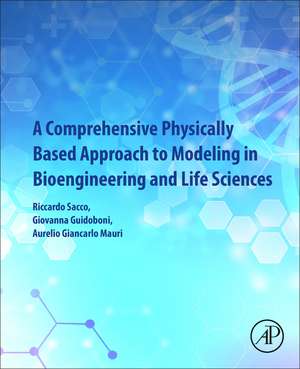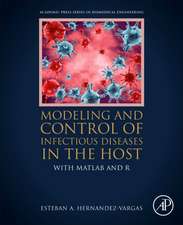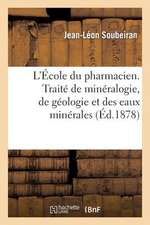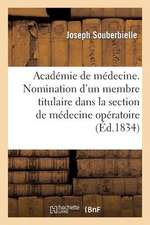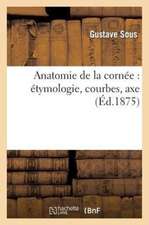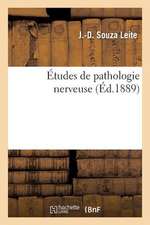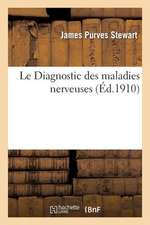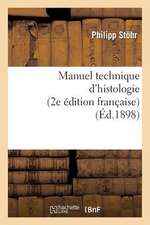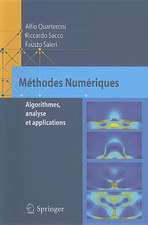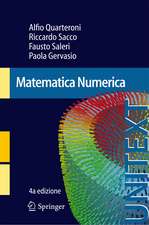A Comprehensive Physically Based Approach to Modeling in Bioengineering and Life Sciences
Autor Riccardo Sacco, Giovanna Guidoboni, Aurelio Giancarlo Maurien Limba Engleză Paperback – 19 iul 2019
- Presents theoretical (modeling), biological (experimental), and computational (simulation) perspectives
- Features examples, exercises, and MATLAB codes for further reader involvement
- Covers basic and advanced functional and computational techniques throughout the book
Preț: 969.41 lei
Preț vechi: 1274.18 lei
-24% Nou
Puncte Express: 1454
Preț estimativ în valută:
185.49€ • 193.67$ • 153.52£
185.49€ • 193.67$ • 153.52£
Carte tipărită la comandă
Livrare economică 28 martie-11 aprilie
Preluare comenzi: 021 569.72.76
Specificații
ISBN-13: 9780128125182
ISBN-10: 0128125187
Pagini: 854
Dimensiuni: 191 x 235 x 46 mm
Greutate: 1.44 kg
Editura: ELSEVIER SCIENCE
ISBN-10: 0128125187
Pagini: 854
Dimensiuni: 191 x 235 x 46 mm
Greutate: 1.44 kg
Editura: ELSEVIER SCIENCE
Public țintă
Biomedical engineers, life sciences researchers, as well as undergraduate and graduate students in Biomedical Engineering, Electrical Engineering, Mathematics, Biology and Medicine.Cuprins
Part I. Mathematical, Computational, and Physical Foundations1. Elements of Mathematical Modeling2. Elements of Mathematical Methods3. Elements of computational methods4. Elements of Physics
Part II. Balance Laws5. The Rational Continuum Mechanics Approach to Matter in Motion6. Balance laws in integral form7. Balance laws in local form8. Continuum Approach for Multicomponent Mixtures
Part III. Constitutive Relations9. Preliminary Considerations on Constitutive Modeling10. Constitutive Relations for Fluids11. Constitutive Relations for Solids12. Constitutive Relations for Multicomponent Mixtures13. Constitutive Relations in Electromagnetism and Ion Electrodynamics
Part IV. Model Reduction of System Complexity14. Reduction of the Maxwell Partial Differential System15. Electric Analogy to Fluid Flow
Part V. Mathematical Models of Basic Biological Units and Complex Systems16. Cellular Components and Functions: A Brief Overview17. Mathematical Modeling of Cellular Electric Activity18. Mathematical Modeling of Electric Propagation Along Nerve Fibers19. Differential Models in Cellular Functions
Part VI. Advanced Mathematical and Computational Methods20. Functional Spaces and Functional Inequalities21. Functional Iterations for Nonlinear Coupled Systems of Partial Differential Equations22. Time Semidiscretization and Weak Formulations for Initial Value/Boundary Value Problems of Advection–Diffusion–Reaction Type23. Finite Element Approximations of Boundary Value Problems of Advection–Diffusion–Reaction Type24. Finite Element Approximations of Initial Value/Boundary Value Problems of Advection–Diffusion–Reaction Type25. Finite Element Approximation of a Unified Model for Linear Elastic Materials
Part VII. Simulation Examples and Clinical Applications26. Ion Dynamics in Cellular Membranes27. Interaction Between Hemodynamics and Biomechanics in Ocular Perfusion
Part VIII. Examples, Exercises, and Projects28. Coding of Examples Using Matlab Scripts29. Matlab Functions for Algorithm Implementation30. Homework: Exercises and Projects
Appendix A. Elements of Differential Geometry and Balance Laws in Curvilinear Coordinates
Part II. Balance Laws5. The Rational Continuum Mechanics Approach to Matter in Motion6. Balance laws in integral form7. Balance laws in local form8. Continuum Approach for Multicomponent Mixtures
Part III. Constitutive Relations9. Preliminary Considerations on Constitutive Modeling10. Constitutive Relations for Fluids11. Constitutive Relations for Solids12. Constitutive Relations for Multicomponent Mixtures13. Constitutive Relations in Electromagnetism and Ion Electrodynamics
Part IV. Model Reduction of System Complexity14. Reduction of the Maxwell Partial Differential System15. Electric Analogy to Fluid Flow
Part V. Mathematical Models of Basic Biological Units and Complex Systems16. Cellular Components and Functions: A Brief Overview17. Mathematical Modeling of Cellular Electric Activity18. Mathematical Modeling of Electric Propagation Along Nerve Fibers19. Differential Models in Cellular Functions
Part VI. Advanced Mathematical and Computational Methods20. Functional Spaces and Functional Inequalities21. Functional Iterations for Nonlinear Coupled Systems of Partial Differential Equations22. Time Semidiscretization and Weak Formulations for Initial Value/Boundary Value Problems of Advection–Diffusion–Reaction Type23. Finite Element Approximations of Boundary Value Problems of Advection–Diffusion–Reaction Type24. Finite Element Approximations of Initial Value/Boundary Value Problems of Advection–Diffusion–Reaction Type25. Finite Element Approximation of a Unified Model for Linear Elastic Materials
Part VII. Simulation Examples and Clinical Applications26. Ion Dynamics in Cellular Membranes27. Interaction Between Hemodynamics and Biomechanics in Ocular Perfusion
Part VIII. Examples, Exercises, and Projects28. Coding of Examples Using Matlab Scripts29. Matlab Functions for Algorithm Implementation30. Homework: Exercises and Projects
Appendix A. Elements of Differential Geometry and Balance Laws in Curvilinear Coordinates
Recenzii
"When this reviewer opted to receive and review this text, it was hoped that it would present as a complementary text to those of Drs. Carson and Cobelli [Modelling Methodology for Physiology and Medicine (2013) and Introduction to Modeling in Physiology and Medicine, 2nd ed. (2019)]. This was not to be the case. While this text is touted as being for “Biomedical engineers, life sciences researchers, as well as undergraduate and graduate students in Biomedical Engineering, Electrical Engineering, Mathematics, Biology, and Medicine (Academic Press website), this reviewer suggests that the text be mainly considered as a reference text, to be used primarily by those with an adequate mathematical and MATLAB background." --IEEE
